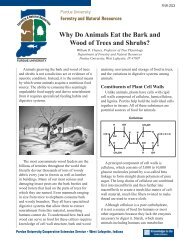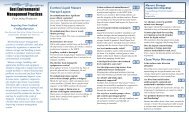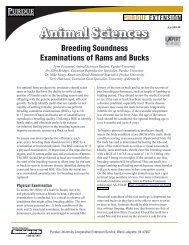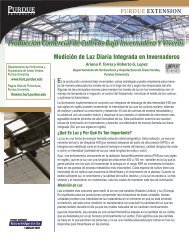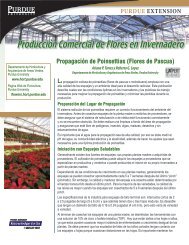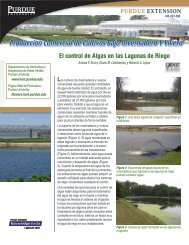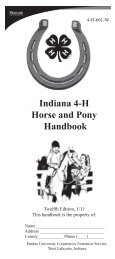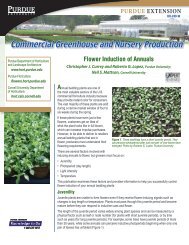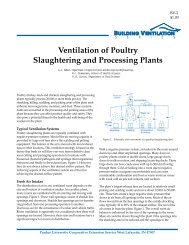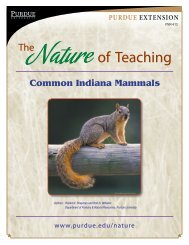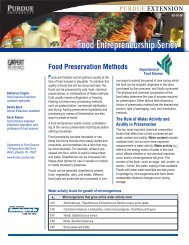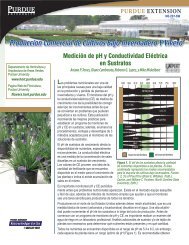lLamaS & aLPaCaS - Purdue Extension - Purdue University
lLamaS & aLPaCaS - Purdue Extension - Purdue University
lLamaS & aLPaCaS - Purdue Extension - Purdue University
Create successful ePaper yourself
Turn your PDF publications into a flip-book with our unique Google optimized e-Paper software.
“Learning by doing” is one of the main reasons 4-H has been so widely recognized and<br />
respected in the field of informal education. It engages the learner, encouraging him/her to<br />
think more, work hard, and ultimately learn more thoroughly than with traditional teaching<br />
methods.The “Lama” curriculum follows a model known as the experiential learning process.<br />
Experiential learning is more than just doing activities. It involves discussing the activity, drawing<br />
conclusions from the activity, and applying them to the real world.<br />
Activities in the youth manuals are designed to help the 4-H member work through the entire<br />
experiential learning process as they do the activity and record their answers.<br />
How it Works<br />
Do — Obstacle Course & Chutes and Ladders<br />
1. Experience. Begin with a concrete experience.This can be an individual or group activity<br />
that involves “doing something.”<br />
Reflect — Pasture Chatter<br />
2. Share your thoughts (Humm Your Thoughts). Next, get the group or individual to talk about<br />
what they experienced when they were doing the activity. Share reactions and observations.<br />
Talk freely.<br />
Sharing questions:<br />
• What did you do?<br />
• What happened?<br />
• How did you feel when . . . ?<br />
• What was the most difficult? Easiest?<br />
3. Process (Desensitizing the Information). Discuss how questions are created by the activity.<br />
Processing questions (use information generated from sharing questions)<br />
• What problems or issues seemed to occur again and again?<br />
• What similar experience(s) have you had?<br />
Apply — Pasture Chatter<br />
Experiential Learning<br />
4. Generalize (Practicing Public Relations). Find general trends or common lessons in the<br />
experience. Identify the important points that apply to the “real world.”<br />
4



